Future of Curation: 5 Ways Curation is Changing
Curation is everywhere these days. If you have not heard, it’s made a mark in almost every area of the online world.
In the past year alone, content curation has been on the front page of the New York Times, no less than 3 times. There have been dozens of books written about curation, many specifically discussing curation in the context of marketing. Since 2009, search and news volume on Google for curation has grown more than ten fold. 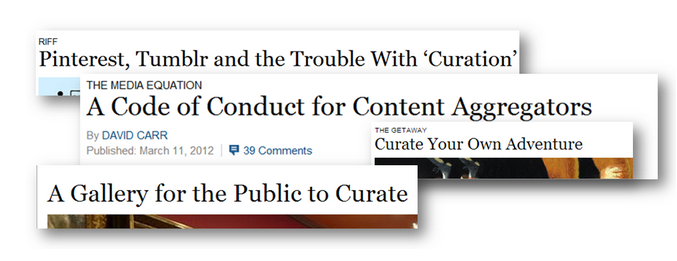
Curation has changed how we receive news content (Huffington Post, Reddit, Drudge Report), how we shop online (Etsy, Svpply), and how we share with each other (Twitter, Pinterest). As brands get into the curation game, its changing how we market and are marketed to online.
Similar to blogging 10 years ago, curation is a land grab right now. Whoever can bring together the best and most relevant content on a specific underserved topic, can rise to the top as an authoritative curator and resource. But it will not be a land grab for too long.
As content curation become so ubiquitous and the amount of content online continues to grow, curation will have to evolve accordingly. Here are five ways, I see curation evolving in the future.
More Human Touch - Curation & Creation Become One and the Same
Currently, becoming a resource on a subject can be achieved through aggregation. You can simply bring together (not curate) content of interest, warehouse them in a single accessible location online, and over time you will become the starting point for anyone interested in that topic online. Just take Google News, for example, the news crawler aggregates content and brings it together in a single location, with some algorithmic grouping and ranking of content.
However, as technology improves, and as more people get into the curation game, the ability to pull together related content will become a commodity. As a result, the curators who rise to the top will not only need to bring together the best content, but also add their own “human touch” or perspective to the content that they curate. As the need for perspective and context increases, the lines between curation and creation blur.
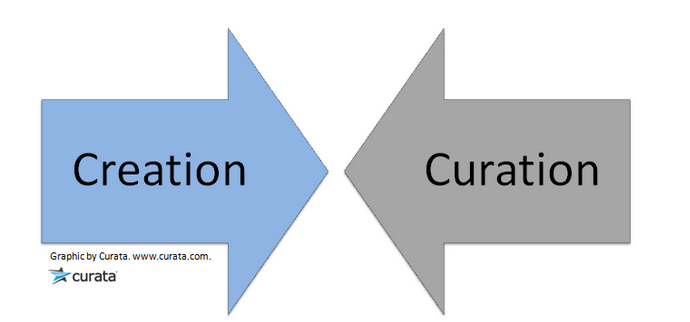
As an example, in graphic below, you can see a comment that a reader left on article in the background screenshot. In the foreground, is the same comment text wrapping a curated link to the same news article. The former represents an act of creation — creating an original comment on someone else’s article, whereas the act of curation is depicted in the second — curating a third-party article with commentary and narrative. But in actuality, the text is the same. There really is no difference between an act of curation and an act of creation.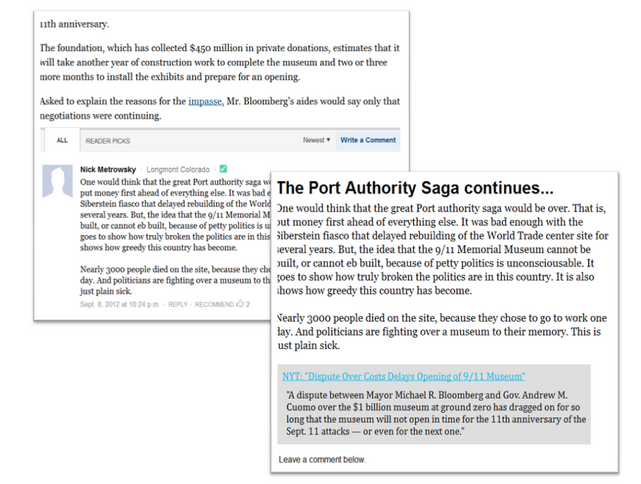
Multimedia Curation: From Mix Tapes to Remixes.
To date, curation online has largely focussed on text content. But we are starting to see curation of other media. With Pinerest, we have seen curation of images, and with platforms like Magnify, we are seeing video curation in action. I cannot foresee all the ways curation will evolve in this realm, but it opens a whole realm of possibilities.
Currently, curation is similar to making a mix-tape. You pick a few pieces of content you like, place the one after the next, whether its a pinboard or a list of links, and pass it along to others. As the curation of multimedia grows, I expect to see that we move from mixtapes to remixes, where curators are synthesizing entirely new pieces of content from other people’s content.
Ethics: From Shades of Gray to Black and White
The definition of ethical content curation is still blurry. There are many guidelines on how to curate content ethically. But there are no clear black or whites, just ways of curating that are good to follow, and others that may land you in hot water. In the future, similar to how the delineation between ethical email marketing and spam was ultimately decide by Congress with the CAN-SPAM act, I expect to see more clarity around ethical curation standards in the future.
New Curation Models: Rise of the Machines
Currently, there are three dominant models of content curation: (1) Social Curation where a large group of people crowd sourcing the curation process by collectively finding, organizing, and sharing content (e.g. Reddit, Digg), (2) Expert Curation where a single expert or small group of experts curates content for a larger audience (e.g. Drudge Report), and (3) Algorithmic Curation where a machine performs the curation process (e.g. Google News).
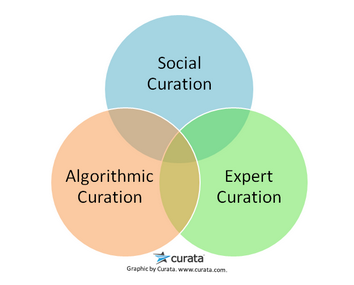
In the future, we will see hybrid models of curation, which are already starting to take place. For example, TechMeme, a popular automated news aggregation site for the technology community, hired a professional curator to oversee the content selection process. Similarly, much of the work that we do at my company Curata is geared towards automating the tedious parts of the process to make curation easier for marketers.
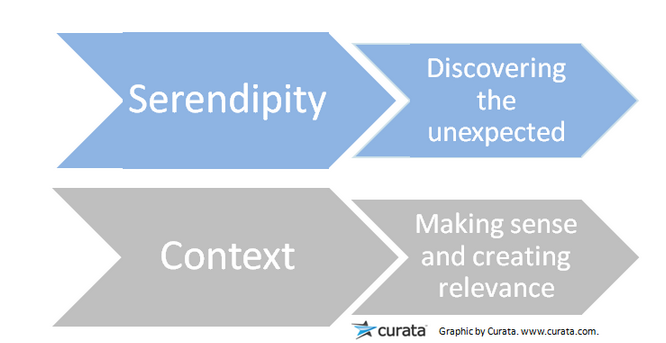
But even as automation takes a greater role in the curation process, there are two things that a machine can never replace. The first is serendipity. Machines are greater in discovering learning patterns and delivering consistency, but in order to determine the unexpected a human will always need to be part of the mix. Secondly, machines can never provide context. They cannot make sense of the content and as a result explain why the content is relevant and important. Curation will always require human in the middle, a curator in the middle.
Publishers, Search Engines, Marketers = Curators
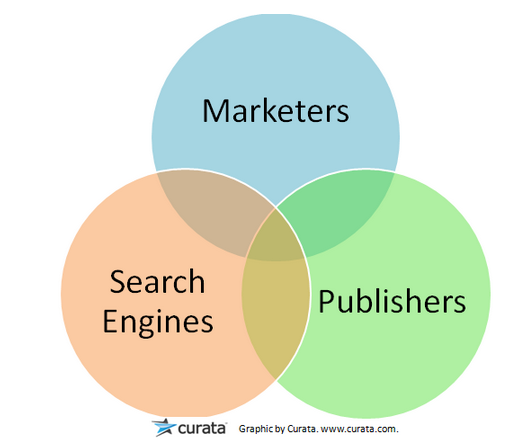
In the future, we will see the role of marketers, publishers, and search engines all converge into the single role of a curator. In recent years, we have seen several of these roles merge already. For example, with the advent of content marketer, it’s a common mantra that marketers are the new publishers. Similarly, we have seen search engines such as Yahoo and even, at times, Google face an identity crisis when they play both the role of a search engine and publisher simultaneously. It’s only a matter of time before all of these roles become one and the same of organizations that create and curate the best content on given topic.
There’s Nothing New Under the Sun
Despite all the talk of curation being something new, and the future of it, curation is really nothing new. One of the first companies (which was once a start-up) to work on curating the web was Yahoo!. When the web was much smaller, they rose to fame by finding, organizing and sharing websites by topic to map out the whole internet.
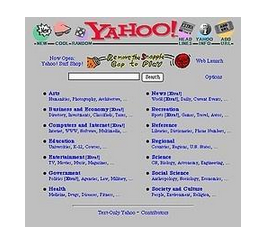
However, pretty soon the web got too big and Yahoo could not keep up. As a result, you would search on Yahoo. Not find what you were looking for, then get bumped to a search engine results page branded as Yahoo! but powered by Google.
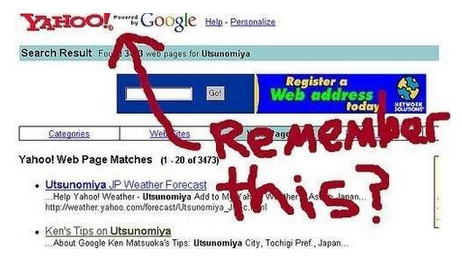
And pretty soon, we all started going to Google directly and skipped Yahoo! completely. For a decade, we almost completely forgot about curation. But curation’s time is back again. This time no one, person or company, is out to curate the whole web. Instead, curation will be found in organizing the small pockets of the web.
If you’d like to get started with curation, we’d recommend reviewing the 5 Simple Steps to becoming a Content Curation Rockstar.






